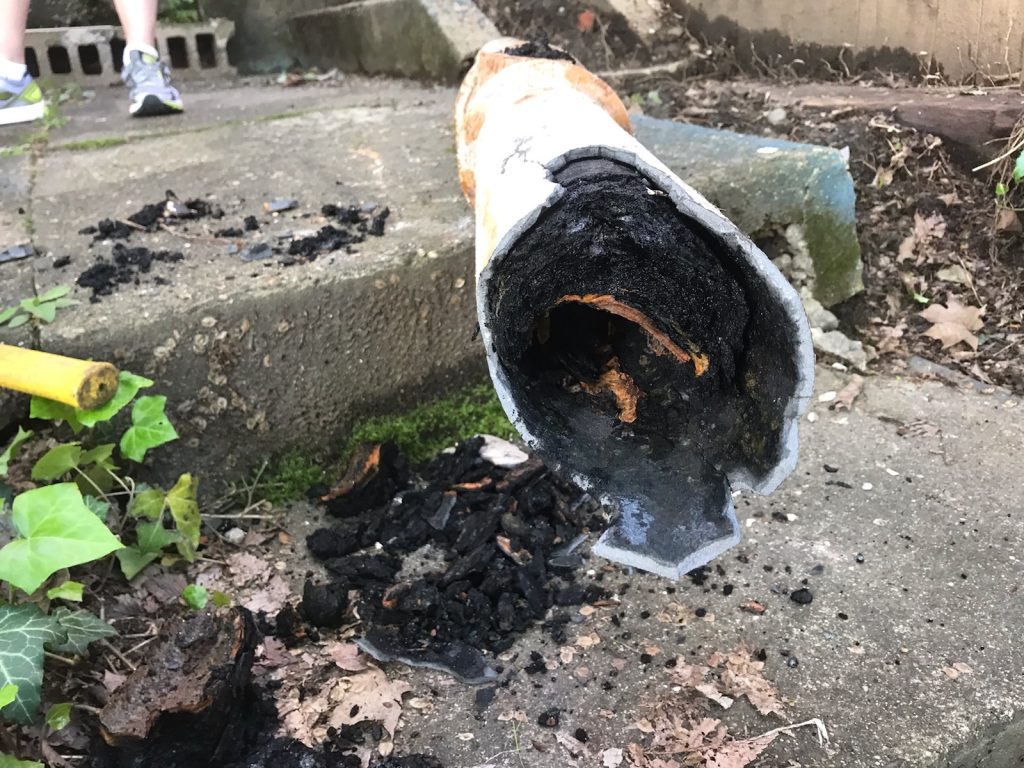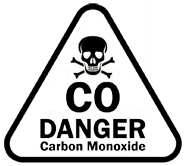When you get clogged drains, it’s a big hassle that won’t go away on its own. Drain clogs don’t happen overnight. It takes a while for things to build up to the point where the water stops draining. Then it can become an emergency. Here’s some problems you need to be aware of and how to find out the health of your drains before you’re making a late night call for a plumber.
How to find drain problems
We take a lot for granted that things will just work, and your drain is the worst among them. Most home owners never realize how bad their drains are until they have problems.
Checking your drains
There are some things you can do to check the drains in your home yourself. And there are some ways that plumbers can find out for certain what’s happening with your drains.
What you can do
In the bathroom and kitchen, once a month fill the basin of the sink with the plug in. Then release the plug to see how long it takes to drain. A clean drain should empty the average sink in 30-40 seconds. Any longer than that can be a sign of problems. There also shouldn’t be any glugging or gurgling like pouring a jug. That means the drain is backed up and going through the vent.
Fill the bathtub with an inch or two of water with the plug in or the drain closed. Then turn on the water and release the plug. Your drain should be able to keep ahead of the water flow and still drain completely with the water running. If you find the tub filling past where it was, this indicates a slow drain.
Toilets that don’t flush quickly are another sign of drain trouble. If your toilet seems to be draining slow, get it checked out as soon as you can. This is a sign that a backup is not far off.
What a plumber could do
Lifting the toilet
A quick way to see the inside of the drain to get an idea of the drain health is to remove the toilet temporarily. This allows the plumber to see down the stack or use a sewer camera to see what’s happening deeper in the stack.
Sewer camera
A sewer camera is used to see what’s inside the drains and sewers of your house. In most cases, this allows a plumber to see what’s going on without having to cut into the drain.
Checking (or installing) a cleanout
Older houses may or may not have a cleanout. It’s a good idea to have one in case of clogs in the main house sewer so unclogging the drain can be done quickly. Having a cleanout installed may seem like a big expense, but it will save money on labor in the future.
What causes clogged drains
Here are some of the most common causes of household drain and sewer backups listed in the order I find them.
Hair
One of the most common drain clog found in smaller drains like you find in bathrooms. The longer the hair the quicker it will clog, so you have to stay on top of drain maintenance.
Soap
Soap is the runner up. It’s not so much that it’s the primary factor. But when there’s clogged drains, soap is usually the glue holding the clog together. Bar soaps are normally made with animal fat, essentially grease. Soap may move quickly with hot water, but as it cools, it sticks to the walls of the drain and catches things like hair building clogs faster than just the soap alone.
Grease
Never, Never, EVER pour grease down your drains! That is unless you want your plumber to visit often. Grease, like soap, will move quickly with hot water. But as it cools it starts to build up in the inside of the drain. That build up will slowly make the drain smaller and smaller until it’s so small that the drain is slow and anything can clog the drain.
Lint
People often don’t think of lint coming from the washer. It’s the dryer lint that gets the most attention because of the fire risk. But washers put a lot of lint down the drain. Using (and regularly cleaning) a lint screen can prevent this from contributing to drain clogs.
“Flushable” wipes and other unflushables
What companies call flushable wipes, simply never should be flushed. These are a plumber’s best friend and a sewer authority’s worst nightmare. They don’t break down like toilet paper. They act more like paper towels not dissolving and stop up both household and municipal sewers.
As a plumber, I’ve found toilets and sinks stopped up with all kinds of things. It’s usually toilets with young children who are enamored with the idea of stuff just “going away” down the drain. But adults flush things they shouldn’t as well. Here’s a quick video giving a run down. of what people commonly flush, but shouldn’t.
Roots
Homes built with terra-cotta sewers are susceptible to roots. The roots grow down and break into the seam. Then anything going down the drain gets caught in the roots like a net and clogs the house sewer. Here’s a recent Sewer Camera inspection video I did for a customer finding roots early. The camera allows me to find the problems before your basement gets flooded with a sewer backup.
Cast Iron Stack
Cast iron drain stacks were commonly used in older construction. The problem with cast iron is there is a chemical reaction between the waste water and the iron in the pipe that causes a build up inside the pipe that narrows down making it easily clogged.
Fixing drain problems
What you can do yourself
Toilet clogs
With low flow toilets, giving an extra flush can save you expensive drain cleaning by allowing more water to ensure everything gets moved to the main sewer without getting hung up along the way.
Here’s a video of how to unclog a toilet. And the best part is you can do it without even using a plunger.
Tub drains
Remember, the biggest culprit in clogged tub drains is hair and those clogs are made worse by soap. These are best prevented by using a hair trap to stop the hair before it goes down the drain. You can prevent soap clogs by using liquid soap instead of bar soaps. Make sure to regularly (at least monthly) check your tub drain for hair buildup.
Clogged sinks
Sinks can be tricky. You can try to not wash anything down that leads to clogs and sometimes they’ll clog up anyway. Ironically, you can start with the same method shown in the video for toilets, on sinks. But once you get the clog out, it’s a good idea to check the trap below the sink to make sure it’s clean. If you’re comfortable removing and cleaning the trap under the sink, it’s an easy process. If you’ve cleared the trap and the drain is still running slow, that’s when it’s time to call in a professional.
When you should hire a professional
Sometimes people think they can tackle plumbing problems on their own, only to find they’re in over their head. A good rule of thumb is if you don’t have the right tools and experience to do the job, don’t. I’ve had to bail out many do it yourselfers who thought they could wing it. It’s better to pay once and have it done right than pay even more to fix the problem and any other damage.
Snaking the drain
Power drain snakes should only be used by a professional with the proper training. These tools can cause serious injury to the operator and the drain as well if you don’t know what you’re doing. The cost of clearing your drain should not include a trip to the emergency room and a claim on your homeowner’s insurance.
Camera inspection
A tool that plumbers have in their arsenal is the sewer camera. It allows them to spot problems that even if you had the camera, you wouldn’t pick up on. The camera along with a trained eye lets them see not only what’s in the pipe, but how the water is flowing to find hidden problems that need closer inspection.
Final thoughts
There’s no single cause for clogged drains and sewers. But once you know what does cause them, you can prevent most of them and save yourself time, money, and frustration. It’s just a fact of life that clogs will happen. When they do, just know when it’s time to call in a plumber. When you need a plumber, schedule with Vince.


